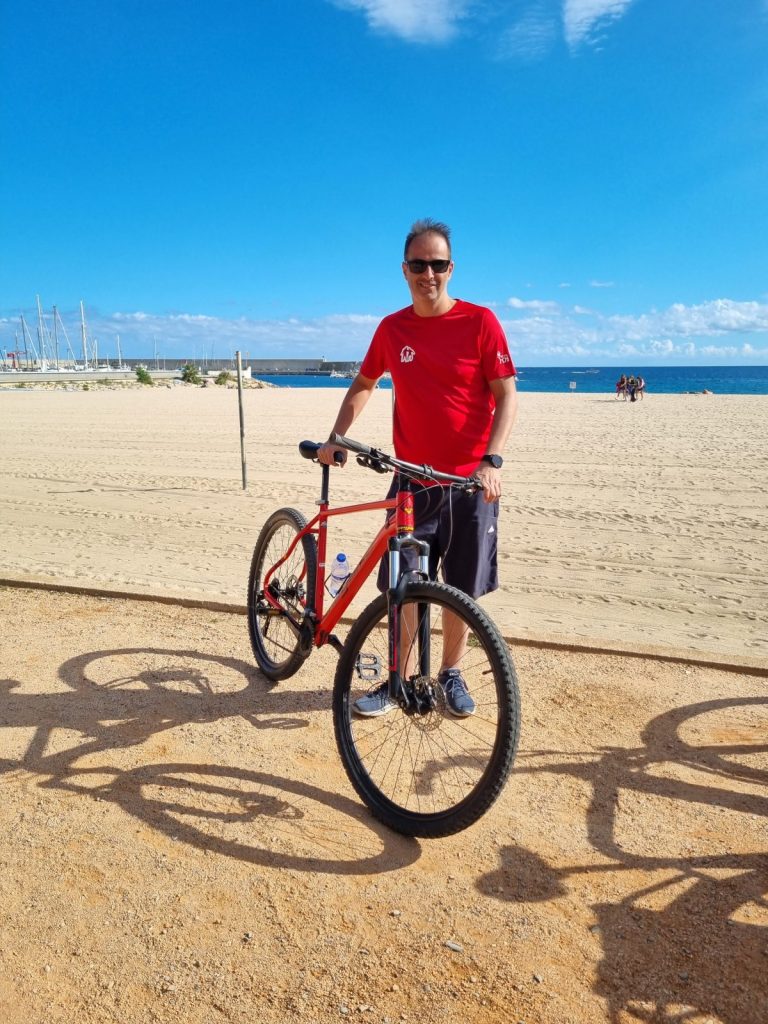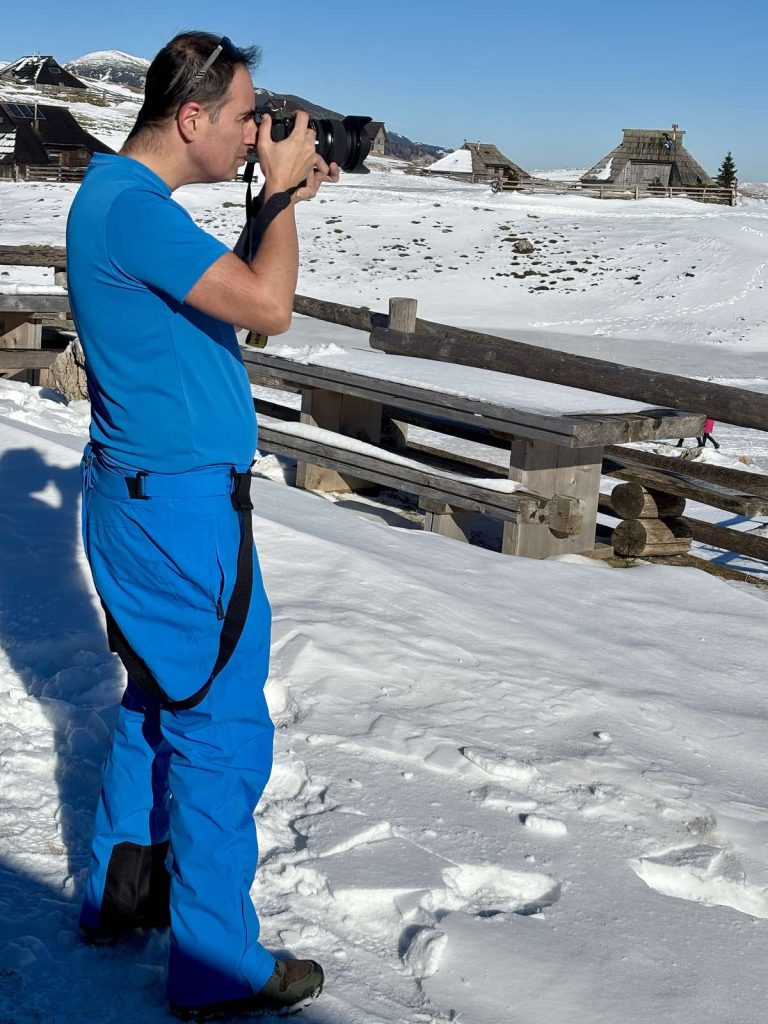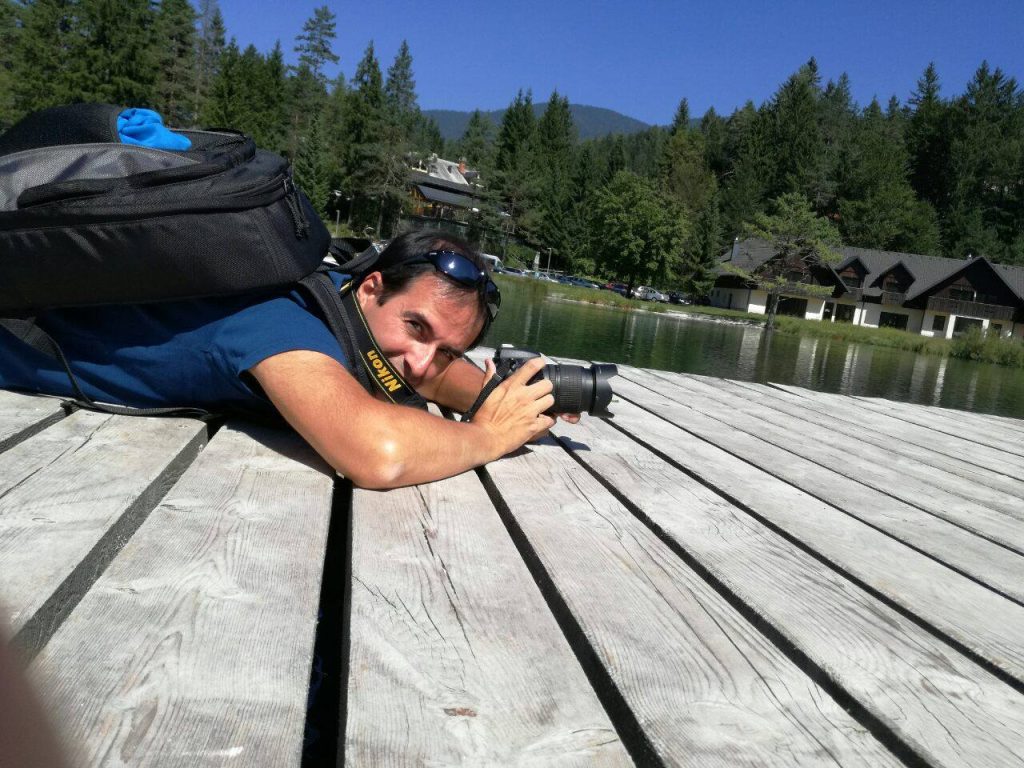Believe, educate, advocate – A #ThisWay Story
In the framework of our #ThisWay campaign, the EHC interviewed Mitja, a patient from Slovenia, who shared his journey of growing up with haemophilia and navigating the challenges of living with a rare bleeding disorder.
He described the struggles of childhood misdiagnosis, limited treatment options, and the impact of physical restrictions on his daily life. He also emphasised the importance of staying active, building a supportive community, and advocating for better care—not only for haemophilia but for all rare bleeding disorders.
We hope you find Mitja’s story inspiring. If you have any questions or would like to get in touch with him, please do not hesitate to drop us an email.

Mitja (Slovenia), a patient with severe haemophilia A
I was born in 1979 and diagnosed with haemophilia at the beginning of 1980. A laboratory error initially classified me as a haemophiliac with 8% FVIII. However, after countless hospital visits, further blood analysis revealed a decimal-point mistake—my actual FVIII level was 0.8%. At a time when on-demand treatment was the only option, this had lasting consequences, particularly on my right ankle and elbow.
My parents did everything they could to protect me. At the time, I often felt they were overprotective, but in hindsight, I am grateful. Thanks to them, my joints are in far better condition than those of some younger haemophilia patients. However, their protectiveness placed a heavy burden on my older sister. She had to look after me at school and keep an eye on me while playing outside. Yet, like any child, I longed to be just like the other kids, to live as normal a life as possible. My attempts to do so often put my family in difficult situations.
Holidays were typically planned near hospitals or cut short due to injuries. At first, I wanted to do everything my peers did—skimming stones, kicking a football, running on uneven ground, skiing, playing basketball—but I quickly realised the cost. I could participate, but each injury meant at least two days in hospital. Naturally, I wasn’t eager to tell my parents every time I got hurt.
As a child, I often thought, Maybe it’ll be fine even if I don’t get treatment. A big mistake. Over time, I became increasingly aware of the importance of having friends who understood my condition. With the right people around me, even group sports became less risky.
I still remember when doctors advised haemophiliacs to avoid exercise altogether. This meant I was sidelined during physical education, left watching my classmates from the bench. My lack of physical activity made one classmate see me as weak, an easy target for his frustrations. But I wasn’t as weak as he assumed, and having friends meant I didn’t need to be strong alone. A group is always stronger than an individual.
Fortunately, attitudes towards physical activity began to change. Exercise—especially cycling and swimming—became encouraged. This shift allowed me to play basketball with friends who understood my condition. By secondary school, I was able to participate in some PE activities. My teacher let me decide what I could and couldn’t do, and two of my closest friends were more than happy to help me out. One was even officially allowed to accompany me home whenever I had a bleed. I remember one particularly bad injury—so bad, in fact, that both of them had to help me home (not really 😊).
Prophylactic treatment became available in Slovenia around 2000. Before that, summer holidays were particularly frustrating. While my friends were outside swimming, cycling, running, and enjoying the sunshine, I was stuck indoors, gazing out the window—angry, upset, and wondering why injuries always seemed to happen on the best days.
Over time, I learned to accept that my life would always be different, no matter how much I tried to change it. Once I made peace with that, I stopped feeling angry, bitter, or resentful. I realised that a rainy day didn’t have to stop me, it just meant I needed to be extra careful on slippery roads.
As a teenager and young adult, I made the most of the outdoor opportunities around me. Living near hills and mountains, I took up cycling and hiking. One bike accident landed me in hospital for almost a month, but it didn’t diminish my love for the outdoors. I continued cycling, mainly uphill, which helped keep my muscles and joints in good condition.
Life changed again when I started working and had children. I no longer had as much time for cycling, but it remained my favourite activity. When heading into the city with my kids, we preferred cycling over public transport. And when I had more free time, I’d take longer, more challenging routes to push myself. I also noticed that staying active helped my ankles: when I exercised regularly, they didn’t swell or ache in the mornings.
Having been limited in my travels as a child, I now seize every opportunity to travel—whether for work, haemophilia-related events, or leisure. Despite joint damage, I can still walk 20,000 steps a day while exploring new cities. Climbing mountains is no longer an option, but I still take on easier trails and always bring my camera to capture the moment.
To the untrained eye, my condition isn’t immediately obvious. When meeting new people, I don’t mention it straight away, I share it only if I feel they deserve to know. It was the same at work. I usually made jokes about it, and fortunately, my managers were always understanding, often protecting me more than necessary. Working in IT has been a blessing, as remote work allows me to perform just as well from home as in the office.
I became actively involved in Slovenia’s national member organisation (NMO) about ten years ago, and it opened my eyes. Haemophilia A and B are relatively well managed, but I realised that those with rarer bleeding disorders often face greater challenges. I believe those of us who understand these issues have a duty to advocate for better care. That’s why I volunteer for the Slovenian NMO, managing the website, social media, and newsletters. At events, I take photos and videos, and I often explain to members why certain treatments and education are so crucial.
My advice: No matter what setbacks you face, you must look for the best in it. Know your limitations. Stay positive and avoid resenting others for what you cannot change. Be honest—first with yourself and then with others as well.


